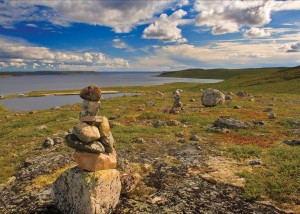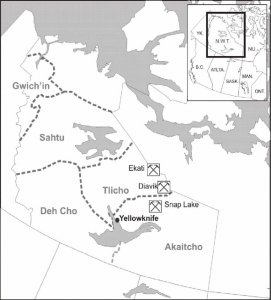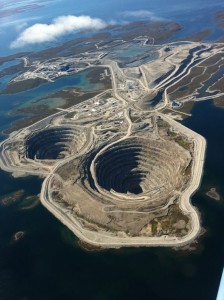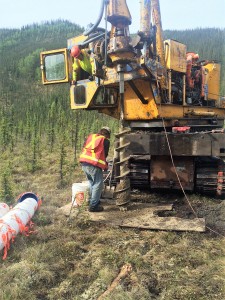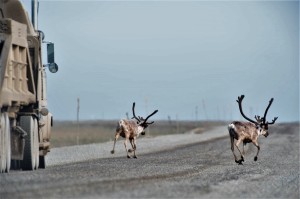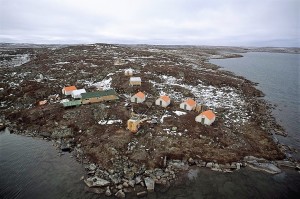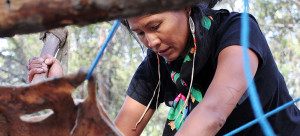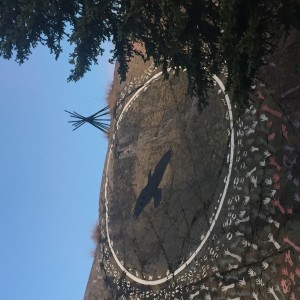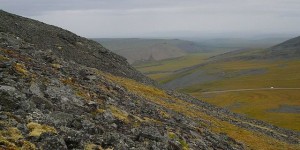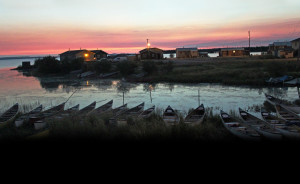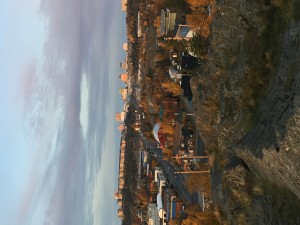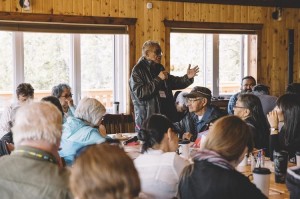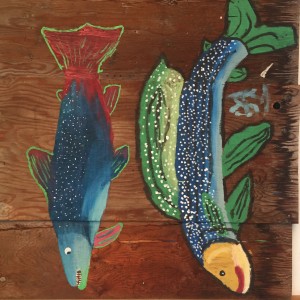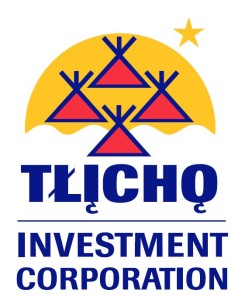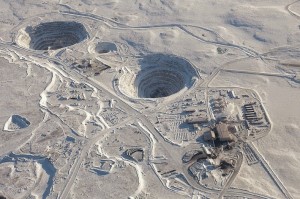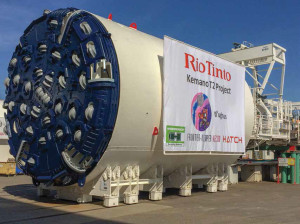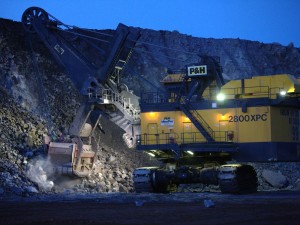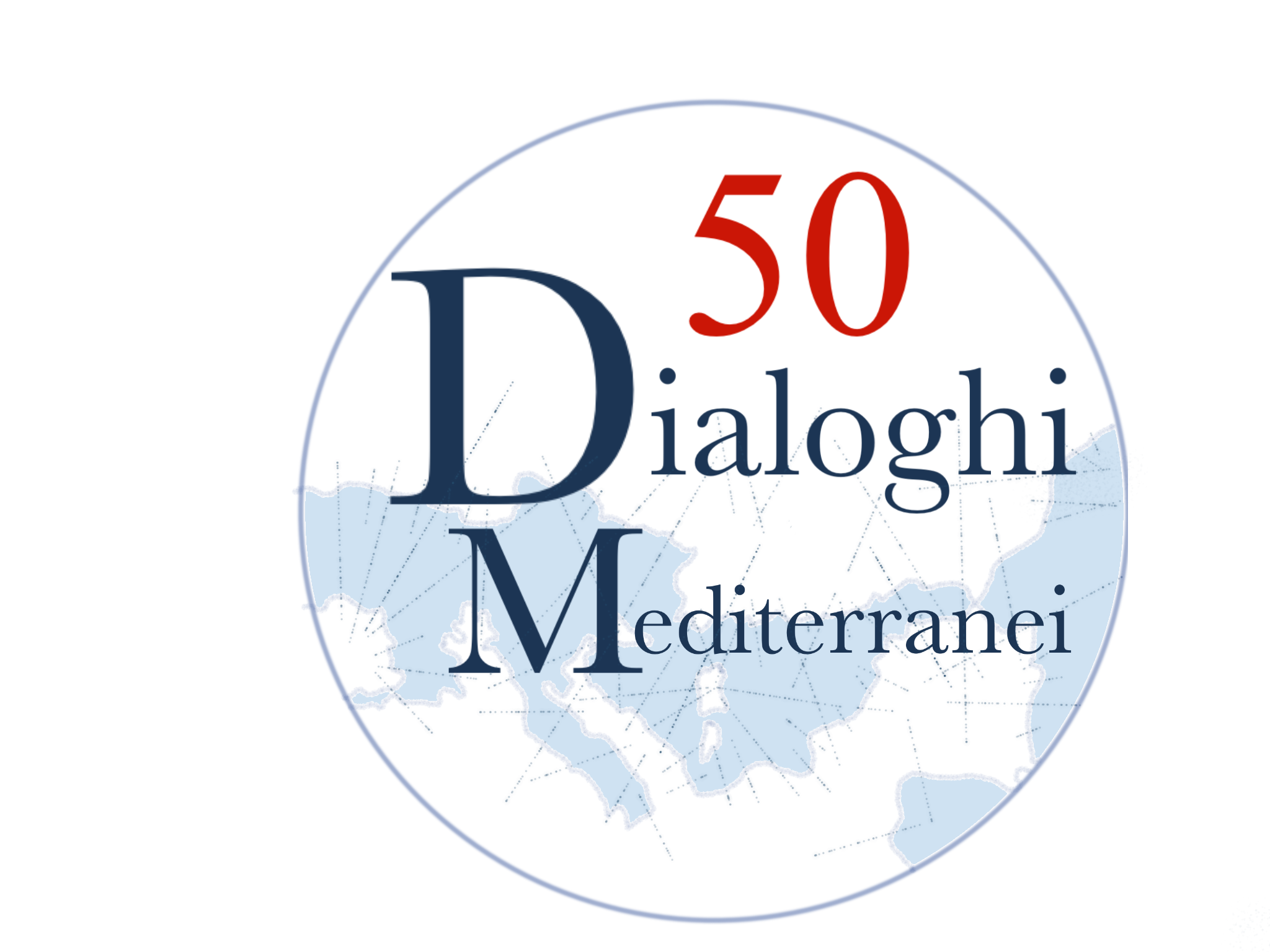di Linda Armano [*]
Canada has a long history of mineral extraction. Before the arrival of Europeans, indigenous people used copper from the Coppermine River to make tools and weapons. According to the Assembly of First Nations (AFN):
«The First Nations (…) were involved in mining development well before the Europeans arrived. In the Lake Superior area, the copper trade was already in existence 6,000 years ago. In the year 2,000 BC, Maritime First Nations inhabitants developed chert beds to make various objects, while silver in the Cobalt area was already being exploited 200 years before our time. Then came the Europeans and prospecting work began as early as 1583, near the location where Halifax now stands. The first mine developed by the Europeans was probably New Brunswick’s Great Lake coal mine in 1639» (Hipwell, et al. 2002: 2).
A wide range of literature exists demonstrating the important historic role of Aboriginal participation in prospecting across Canada, and in general in North America (Coumans, 2002; Dreyer, 2002). Of particular note are the role of Aboriginal Peoples in gold discoveries throughout the Pacific Northwest (Marshall 1996; Cruikshank 1992) and their attempt to forcefullydefend their lucrative claims through full-scale resistance. This led to the Fraser War of 1858 and the subsequent formation of Indian reserves in British Columbia (Marshall 1996).
In 1846, commercial production was initiated to the east of Sault Ste. Marie. In 1875, the United States Navy began operated a mine producing graphite and mine at Cumberland Sound, on Baffin Island. In 1883, during the construction of the Canadian Pacific Railway (CPR), copper and nickel were discovered in the vicinity of Sudbury, Ontario (Dana, 2014). For decades copper was used in the production of Canadian pennies. Until 1920, the large Canadian penny was made of 95.5% copper, 3% tin and 1.5% zinc. In 1920, the small Canadian penny was introduced; between 1942 and 1996 its composition was 98% copper, 0.5% tin and 1.5% zinc. From 1997 to 1999 the Canadian 1-cent coin was made of 98.4% zinc with 1.6% copper plating, and thereafter of 94% steel, 1.5% nickel, and 4.5% copper plating. The 1-cent coin has since been phased out of circulation in Canada (Dana, 2014; Bernauer, 2010).
Today, mining in Canada is primarily export-oriented, where iron ore, gold, potash, diamonds, uranium, and zinc are the most important resources, as are copper and nickel.
Large-scale mining projects inevitably have widespread impacts on local societies and ecologies. Because of their close relationships to the land, water, and resources therein, and their marginalized social and economic positions, Indigenous peoples living in current or former settler colonies are particularly vulnerable to mining’s impacts yet have the potential to benefit from its opportunities as well (Miller, 1996). These impacts and opportunities are shaped by the nature of the mineral and the surrounding environment; the approach of the extractive company; relevant regulatory regimes; socio-economic conditions, and Indigenous communities’ responses, among other factors.
This paper reviews the literature, both published and unpublished, on Indigenous peoples’ relationships to large-scale mining in post/colonial contexts. Furthermore, drawing on interviews and participant observation in the Northwest Territories (NWT), this contribution aims to analyze the impact of the diamond industry, started with the announcement of the discovery of diamonds in the NWT in 1991, on Tłįchǫ community living in Behchokǫ̀. I will begin with a brief overview of the impact and benefit agreements (IBAs) and the history of their development in the Canadian North. Next, I discuss key insights into processes in which relations between indigenous peoples, corporations, and the state are being reconfigured. With these insights in mind, and drawing on my research in the NWT, I outline some of the ways in which IBAs might be considered into the process of removing barriers to the accumulation of capital, privatizing the federal duty to consult and to accommodate indigenous peoples regarding development on their lands, and naturalizing market-based solutions to social suffering. I conclude with some thoughts on the implications and limitations of these findings.
Large scale mines and impact on Tłįchǫ community in the NWT community: State of art and analysis.
The study of the impacts of mining and mineral developments on indigenous peoples is a growing field of inquiry, both in Canada and worldwide (Canada: Hobart, 1982, 1989; Bielawski, Lutsel K’e Dene First Nation, 1992; Keeping, 1999; Gibson and Klinck, 2005; Paci and Villebrun, 2005; Tsetta et al., 2005; Windsor and McVey, 2005; Gibson, 2008; other countries: Banks, 1997; Kauffman, 1998; Bury, 2002; Doohan, 2006; O’Faircheallaigh, 2006; Ali, Grewal, 2007). Historically, large-scale resource development near indigenous communities has produced very few benefits for indigenous people, but significant detrimental impacts (Freudenburg, Frickel 1994; Ballard, Banks 2003). Several comprehensive reviews of impacts have been undertaken (Howard 1988; O’Faircheallaigh 1991; Bedford, Warhurst 1999; Whiteman, Mamen 2002). O’Faircheallaigh (1991) notes that, while indigenous groups vary greatly by geographical location, cultural practices, and history, they experience quite similar negative and positive impacts of large-scale mineral developments.
Whiteman and Mamen (2002) determine that the impacts of mining activities on indigenous communities can be roughly grouped under five main themes: impacts resulting from environmental damage, health impacts, abuse of human and indigenous rights, socio-cultural impacts, and gender-related impacts. Some of the most cited negative impacts are health and lifestyle changes that occur because of greater economic prosperity and personal incomes in communities affected by mining (Freudenberg 1984; Goldenberg et al., 2010). Increased incomes have been linked to increased levels of alcohol and drug use and gambling. Hobart (1989) determined that in Kugluktuk, NWT, a 29% increase in alcoholism among Gulf Oil’s Inuit workers was found initially, but it did eventually subside. In a North Slave Métis Association study of the impacts of diamond mining thus far on their community, 65% of respondents indicated that the increase in personal income was associated with an increase in gambling, and 71% reported spending less time on the land (North Slave Métis Association, 2002). Brubacher and Associates (2002) noted that being able to buy better vehicles and equipment often led to increased efficiency in hunting activities and decreased the actual time spent in these pursuits. Mining also has profound impacts on the social environment (Paci, Villebrun 2005), pollution, boom-and-bust economic cycles, and movement of workers onto indigenous lands and communities (Duhaime, Comtois, 2003). Rotational work cycles can put pressure on families, which can lead to family breakdown (IWGMI, 2005).
Much existing literature has focused on identifying and mitigating the negative effects of mining; however, some positive effects for indigenous communities have also been documented. Economic prosperity, higher employment rates, and increased incomes are some of the most cited. For example, employment rates and incomes have increased across the NWT, especially in communities close to the mines (GNWT Department of Finance, 2006). Aboriginal people at the two operational diamond mines in the NWT were estimated to make up 31% of total mine employees in 2004 (IWGMI, 2005). Training and educational opportunities for local people have also been noted in communities affected by mining (Dogrib Treaty 11 Council and Dogrib Community Services Board, 2005; IWGMI, 2005).
Other positive impacts include increases in business opportunities, mining-related (“spin-off”) spending in the region, and support for social, cultural, educational, and other community activities (Paci and Villebrun, 2005). Communities near the Nanisivik zinc-lead mine in Nunavut reported an increase in sharing, not of money directly, but of equipment and vehicles bought by mine workers and shared throughout the community (Brubacher and Associates, 2002).
Studies of how large-scale mining affects young people, and more specifically indigenous youth, make up a very small subset of the literature on mining impacts. Seyfrit and Hamilton (1992) studied the social impacts of resource development on Alaskan youth (primarily Yupik, Inupiat, Athabaskan, Tlingit, and Haida adolescents) in 15 rural villages in the Northwest Arctic and Bristol Bay boroughs. Focusing on the impacts of resource development on the educational and employment aspirations of these young people and their tendency to stay in, or leave, rural Alaska, these authors found that Alaskan Native youth were less inclined than their non-Native peers to consider moving from rural villages for work or school. More young women than young men aspired to move out of their home regions. The opinion of parents and grandparents were very important in young peoples’ decision making. Some differences appeared when findings were stratified by community location in relation to mining developments, but Seyfrit and Hamilton also found broad similarities across the regions studied. Some important contrasts existed between rural village youth and those already in larger hub towns regardless of proximity to a mine site.
Goldenberg et al. (2008a, b, c, 2010) examined the impact of an economic boom (primarily from oil and gas development) on young people’s health and social wellbeing in Fort St. John, British Columbia, Canada, where approximately 11% of the population identify themselves as Aboriginal. Their main findings were that among young people, overall levels of educational attainment fell (jobs in the oil patch being available with a low level of education), substance abuse and addiction increased, and finding affordable, appropriate housing became increasingly difficult.
Some studies looking at broad or overall impacts of mining have also mentioned impacts on youth. For example, Hobart (1979), examining the socioeconomic impacts of the Nanisivik mine on communities in the North Baffin region, mentioned the effects of mine rotation schedules on children. More than two-thirds of the respondents indicated that mining employment had negative effects on children, such as missing a father or needing a father for parental discipline. In a more recent study of mining impacts by the territorial government (GNWT, 2000), more than half of those surveyed said that their employment in the mine-affected their children in some way. A report by the North Slave Métis Association (2002) on the Slave Lake Métis community found that the recent development of the diamond mining industry can be linked to acting out, dropping out of school, or mimicking addictive behaviours among youth. While not specifically focused on the impacts of resource development on youth, Condon’s (1987) ethnography of Inuit youth on Holman Island, NWT, also provides important insight into the context and lives of some young people in the region.
Many articles from NWT, most of all from the areas around Yellowknife and the Mackenzie Valley, have remarked that while outsiders view the North as a frontier, and the early explorers and fur traders (and perhaps today’s natural resource developers) see it as a land to conquer, for Northerners, it is a homeland and a place where indigenous peoples have lived for thousands of years (Berger, 1977). One of these indigenous groups in the diamond mining region is the Tłįchǫ (also seen written as “Tlicho” or “Dogrib”) Dene First Nation people of the North Slave and southern Mackenzie Valley region of the NWT. Their life is supported through: «Denendeh, the land, and water, which produces a rich complex of traditional foods that provide, nutritionally and otherwise, the spiritual, cultural, and physical well-being of the Dene» (Paci and Villebrun, 2005: 75).
Mǫwhì Gogha Dè Nįįtłèè is the traditional Tłįchǫ area described by Chief Monfwi during the signing of Treaty 11 in 1921 (Davison, Hawe 2011). For centuries, the Tłįchǫ have made their living by hunting and fishing in this region throughout the boreal forest and barren lands around the present-day communities of Behchokǫ̀, Gamètì, Whatì, and Wekweètì. Tłįchǫ families today continue to value the land and the livelihood it provides: their relationship with the land is an important aspect of self-respect and self-reliance for the Dene people (Parlee and Marlowe, 2002). Behchokǫ̀, NWT, a community made up of the twin towns of Rae and Edzo, is located 115 km northwest of Yellowknife. Rae is on the southeast shore of Marion Lake, and Edzo is about 13 km away by road on the east shore of a channel between Marion Lake and the north arm of Great Slave Lake. The current population of Behchokǫ̀ is 2026 people, 94% of whom identify themselves as Aboriginal (GNWT Bureau of Statistics 2009a, b).
Until the 1960s, the Tłįchǫ people were a nomadic group (Helm, 1972, 1979, 2000). In 1960, the community of Rae consisted of tents, small shacks, the trading posts, a few storage buildings, and a basic hospital. Electricity was brought to the community in the 1950s, and the road connecting Rae with Yellowknife and other points south was built in 1960 (Dogrib Community Services Board, 2000). Edzo was created as a second community because in 1966, the federal government (and later the newly formed Government of the NWT) determined that Rae was not an appropriate site for the development of a school. An appropriate sewage disposal system did not exist, there were hundreds of stray dogs, and fish in the nearby lakes were infested. The Band Council in Rae supported the establishment of the new site; however, others in the community opposed the move. Regardless of any dissent, a new site was selected 13 km from Rae, and a school was officially opened in this new “community” of Edzo on 9 January 1972 (Dogrib Community Services Board, 2000). This did not mean, however, that the full move of the community ever happened. Today, about 90% of the population of Behchokǫ̀ has remained in Rae, separated by an all-weather road from the school and the few houses and other buildings in Edzo (Davison, Hawe 2011). Over the past three decades, the Tłįchǫ people developed and negotiated the Tłįchǫ Agreement with the NWT and federal governments. The Agreement, which came into effect on 4 August 2005, is the first combined comprehensive land-claim and self-governance agreement in the Northwest Territories (Dogrib Treaty 11 Council et al., 2006). With the signing, the Tłįchǫ people negotiated, among other things, a share of mineral royalties, wildlife harvesting rights, water, tree, and forest rights and management, and exploration and subsurface rights and resources in a section of land about 39 000 km2 between Great Slave Lake and Great Bear Lake in the NWT. In addition to the Tłįchǫ Agreement, the Treaty 11 Band Council (now the Tłįchǫ Community Government), have also signed Impact and Benefit Agreements (IBAs). For example, separate agreements were negotiated with BHP Billiton Diamonds Inc. in 1996 and Diavik Diamond Mines Inc. in 1999 (GNWT, 2007).
Method and results
This ethnographic study, undertaken with the Tłįchǫ First Nation of Behchokǫ̀, NWT, broadly examines how changes in the macro-environment (including resource development, the economy, and governance) are affecting both the education and employment pathways of youth in the community. The present contribution has collected information from fieldwork which is still in progress since September 2019. Specifically, I spent seven months, divided into two different periods, in the community in which I took extensive field notes from participant observation.
During my fieldwork notes recorded such things as daily routines; behaviors of young people, parents, and others; the use of symbols and resources; public presentations; and informal discussions among members of the community as well as a multi-day hunting trip with community members on the NWT barren lands and time spent in the neighboring communities and the territorial capital of Yellowknife. Regarding interviews, participants in focus groups included Aboriginal and non-Aboriginal people, both males and females. Eleven semi-structured interviews were conducted. Participants included three elders, seven young people divided between men and women, and one consultant working. The interviews have been transcribed. Archival documents were also collected. These included above all local newspaper articles and announcements. Although each interview was unique and questions were adapted to suit the particular group or person’s roles and perspectives, general questions included:
- Can you tell me a little bit about yourself? About your community?
- What do you think is really great about living in this community?
- Are there tough parts about living here?
- What are the most difficult issues facing this community?
- What do young people do in their free time?
- Have you noticed any changes in the community over time?
- Have you noticed any changes in the community since the diamond mines opened?
- From your perspective, how is diamond mining affecting, or going to affect, the community as a whole? And youth more specifically?
The researchers were guided by the CIHR Guidelines for Health Research Involving Aboriginal People (CIHR, 2007). Furthermore, this study was approved by the Aurora Research Institute of the Northwest Territories. The approval process included gaining support for the research from the local governments and school board. The methodology followed what Margaret Kovach has called “Conversational Method” in Indigenous Research (Kovach, 2010). As the author highlights:
«The conversational method is a means of gathering knowledge found within Indigenous research. The conversational method is of significance to Indigenous methodologies because it is a method of gathering knowledge based on oral storytelling tradition congruent with an Indigenous paradigm. It involves dialogic participation that holds a deep purpose of sharing stories as a means to assist others. It is relational at its core» (Kovach, 2010: 40).
During my fieldwork the topic of the mine’s impact always emerged strongly. All people interviewed highlighted that the mine requires most workers to be on two-week rotational shifts. This means that workers are in camp for 14 days (typically working 12-hour shifts) and then out of camp for 14 days. With more members of the community working, there is also more discretionary income for vehicles and for traveling.
The two-week schedule and the increase in financial resources have led to a number of changes at family and community levels that affect the lives of youth. Most notable is an overall decreased presence of adults in the home. The mine is by far not the only factor affecting the presence or absence of adults in the home, but it is a contributing factor. The disruption to the family unit caused by some men and women from the parent generation being away for shifts at the mine can be additional to family-level disruptions associated with alcohol or drugs, cycles of abuse, and societal marginalization. All of these factors combined make it harder for some parents to provide positive family situations for their children. As an elder stated:
«The kids really run the show. I think that there is more money in town, because of the mine, but now parents are hardly ever at home… They have replaced parenting and guidance and caring with money. (…) Sometimes, there is a lack of guidance. Some of the kids are really raising themselves » (Elder interview).
The presence of the mine, by increasing reliance on the grandparent generation for childcare, has contributed to the intergenerational mixing of children and grandparents. Grandparents were generally still living on the land when they were young people, and some went to residential school. Many have very limited experience with the current style of primary and secondary education. Grandparents may be less able to empathize and connect with a grandchild as a young person and student. Their ability to assist with homework in English or their ability to communicate with the school about the student’s work and progress may be limited. This type of intergenerational mixing has distinct social implications and may be of some benefit for the maintenance of the Tłįchǫ language. The grandparent generation comprises the majority of fluent Tłįchǫ speakers, and youth in many such homes are exposed to daily immersion in the spoken language.
Impact and Benefit Agreements (Ibas) between Tłįchǫ community and mining companies.
This old lady was walking along, looking for berries and she found this gold rock. Later on, when a prospector saw the rock, he asked where she found it and said they wanted this rock. The old lady said, “No. You give me something then I will give it to you.” He gave her three stovepipes for that rock. That’s how the gold mines came to be here [in Yellowknife]. And our people did not benefit from that … As you see today, we walk around the arsenic that’s left behind. Who’s going to clean that up? Paraphrased interview, from Galbraith (2005)
In 1998 Canada’s first diamond mine, the Ekati Diamond Mine, began production. Its discovery is imbued with an adventurous tale:
«Having neglected to bring a pickax on this particular trip, Charles E. Fipke was nearing the bottom of a seven-and-a-half-foot hole in the snow and ice by tearing at some rocks with the small pick-end of a geologist’s hand hammer. His son was at the distant top, shouting down curses about the cold, the wind, the risk of dying, and the uselessness. Fipke ignored him. It was his own turn to dig. It had taken them five hours to get down this far, and, as usual, he has not gone to stop until he got what he wanted: a twenty-pond bag of sand and gravel from the frozen earth at the bottom. Twelve years into this mad prospecting enterprise there seemed to be no end in sight. That is unless you consider the empty bank account, the crystals of wind-driven snow now eroding their faces, the cold progressing up their limbs (…), they were a several-week walk from town in the middle of the tundra. (…) Millions of frozen tundra lakes, covered with snow and pocked with lichen-blackened boulders around the shore, looked the same from the air – except this one, sitting in its own craterlike depression, a bit more circular than the others. On both the north and south shorelines, dark, unusual cliff dropped straight to the ice, as if someone had drilled a hole in the bedrock. In the camp that night a dozen mile off, Fipke could not sleep» (Krajick 2001: 6-8).
The journalist Kevin Krajick explains in this way, in his book “Barren Lands: An Epic Search for Diamonds in the North American Arctic”, the difficulties of the discovery of the artic Ekati mine’s kimberlite in the extreme environment of northern Canada by the Canadian geologist Charles Fipke and his son.
Some forty years ago, Canada’s Aboriginal Peoples – First Nations, Inuit, and Métis – had no say in decision-making about mining activities on or near their ancestral lands. Today, there has been a proliferation of different mechanisms for including Aboriginal perspectives in decision-making, and a growing body of literature is devoted to examining the issues at the crossroads of mining and Indigenous Peoples in Canada. While some authors highlight the inroads made by industry concerning changing corporate practices (e.g., Sloan and Hill 1995), others point out there is still a long way to go before Aboriginal views are appropriately integrated into decision-making (e.g., Innu Nation/Mining Watch Canada 1999).
The NWT has long been the site of constant social and political change. However, since the 1967 transfer of the territorial government from Ottawa to Yellowknife, the degree of change has been especially significant. The atmosphere of political change in the NWT has provided the context for a dramatic shift in power dynamics in the North in a relatively short time (Christensen, Grant 2006).
After opening Ekati mine, in 2000, construction started on the Diavik Diamond Mine and production commenced in January of 2003. The Diavik Mine will likely be followed by De Beer’s Snap Lake Diamond Project which could begin operations in 2006. The development of the Ekati mine was also accompanied by the establishment of a small cutting and polishing industry located in Yellowknife and N’dilo (an Aboriginal community adjacent to Yellowknife).
All economic indicators demonstrate that the NWT economy has grown significantly as a direct result of the diamond industry. Since 1997, which was the year of the start of construction of the Ekati mine and the main impact of the diamond industry, GDP and personal incomes have risen rapidly, new capital investment has grown to record levels, unemployment has fallen to below the national rate and retail and wholesale trade sales have increased dramatically (Ellis Consulting Services, April 2004).
In this scenario, IBAs are a relatively new component of the northern resource governance regime, having emerged only in the late 1980s and early 1990s (Kennett, 1999). Since then, IBAs have become a standard component of mineral development in the Canadian North; they are a de facto requirement for corporations interested in developing mines within the traditional territories of northern indigenous groups and have been negotiated concerning every major mine proposed or developed since the late 1990s (https://www.nrcan.gc.ca/our-natural-resources/minerals-mining/10858).
For indigenous communities, IBAs typically include provisions for employment quotas, skills training, and other educational benefits, contracting and joint venture opportunities, financial compensation, environmental mitigation-related measures, and even culture-related benefits (G. Gibson, C. O’Faircheallaigh, 2010). Industry proponents, for their part, secure good working relations with indigenous communities and enhance their social license to operate – but they also, it should be noted, frequently negotiate clauses prohibiting public critique of the company and any form of protest against the mine on the part of indigenous community members, as well as other measures to secure ongoing consent (Caine, Krogman, 2010; Prno, Slocombe, 2012). It is typically industry proponents, moreover, that insist on the confidentiality of IBAs, although indigenous signatories have also advocated for and defended the confidentiality of IBAs. As such, the details of the range of impact-benefit agreements signed in the North are not in the public domain and are sometimes not made public even to members of signatory communities, and thus much of the literature on IBAs comments on the agreements in general terms.
Indeed, what distinguishes IBAs from other components of resource governance in the North (such as mining codes, Crown land regulations, environmental impact assessment processes, comprehensive land claim agreements, various forms of licensing, and so on) is their bilateral and private nature: they are typically signed between an industrial proponent and an indigenous government, with no direct involvement by federal or territorial government representatives or agencies, and no public policy framework guiding their negotiation, terms of reference, or implementation. The first IBAs signed in the North, as part of the development of the Ekati diamond mine in the NWT, remain the first and only IBAs in which government (Mahon 1977) played a formal role, insofar as Indian and Northern Affairs (INAC) mandated that “satisfactory progress” (CIRL, 1997) be made in negotiations regarding the realization of benefits and the mitigation of impacts for indigenous communities affected by the Ekati mine within a sixty-day period in 1996. INAC itself did not participate in the negotiations. Since then, despite numerous calls for a comprehensive federal policy to guide IBAs in the region, INAC (now Aboriginal Affairs and Northern Development Canada, or AANDC) has issued no such guidelines and appears not to be actively pursuing the matter. There is a relatively robust literature on IBAs, some of which emphasize the practical benefits of IBAs for Aboriginal communities (J. Prno 2007; L. Galbraith, B. Bradshaw, M. Rutherford, 2007) and some of which raises concerns about the broader power relations shaping IBA negotiation and implementation (Caine, Krogman, 2010). Caine and Krogman argue, for example, that IBA researchers have thus far been insufficiently attentive to how power infuses not only the negotiation and implementation of IBAs, but also the broader social, political, and institutional context within which they have come to make sense. Their findings echo and extend concerns articulated in the late 1990s when scholars first began to comment on IBAs after the federal government mandated the negotiation of IBAs for the Ekati diamond mine. Since then, as IBAs have become an established part of the northern resource governance regime, research has tended to focus more on the extent to which IBAs enhance the equitability, sustainability, and benefits of mining than on critiques of the political-economic conditions under which they have emerged (Keeping, 1997).
Perhaps because IBAs do not formally and directly involve any government ministries, the role of the state in the development and implementation of IBAs has not been a primary focus of the literature. IBAs are frequently referred to as “supra regulatory” (Galbraith et al. 2005) and their role in northern resource extraction is primarily considered as a supplement or alternative to state regulations, policies, and practices. While Isaac and Knox note that, ultimately, IBAs are subject to contract law and may well be tested by the judicial system, in general it is the absence of the state from IBA negotiation and implementation that tends to be noted by scholars. The implications of that absence have been probed by several authors. Prno and Slocombe understand IBAs as evidence of the emergence of “local communities” as “particularly important governance actors” in northern resource extraction, arguing that “conventional approaches to mineral development no longer suffice for these communities, who have demanded a greater share of benefits and increased involvement in decision making (Prno, Slocombe 2012: 354). In such formulations, less state is good for local communities, insofar as the state has been understood as a barrier to community involvement in governing extractive activity. Others have been much more critical of the lack of active state involvement in this dimension of resource governance, both concerning the imposed sixty-day timeline concerning the Ekati IBAs and more broadly around the question of federal fiduciary responsibilities.
How might we understand IBAs, then, in relation to processes of the last period of colonization of Canada? As noted, IBAs have not been explicitly theorized about colonization in Canada, although scholars have identified a number of issues associated with IBAs that might productively be read as manifestations of its processes and policies. We consider, here, the ways in which IBAs relate to the processes of marketization, privatization, and individualization in the Canadian North, and to broader state interests in ensuring that large-scale, industrial resource extraction proceeds in the region. Drawing on interviews conducted with indigenous leaders, involved in the negotiation, implementation, and regulation of IBAs in the Northwest Territories, as well as on a review of key documents that have shaped the evolution (or lack thereof) of federal policy on IBAs over the past ten to fifteen years, I argue that the emergence of IBAs as a key dimension of resource governance in the North since the late 1990s has advanced objectives in the region, which I understand to include the removal of barriers to accumulating capital; the privatization of state assets, functions, and services; and the promotion of market-based solutions for various social, economic, environmental, and political struggles.
The privatization of state assets, functions, and services are considered a hallmark of neoliberal ideology and practice. Therefore, IBAs can be understood as a means by which the Crown’s duty to consult and accommodate indigenous peoples is privatized. The duty to consult and accommodate rests solely with the Crown which is required to consult and accommodate indigenous peoples in Canada whenever their traditional rights may be infringed upon by resource development. From a legal standpoint, the Crown can delegate procedural aspects of this duty—third parties, for example, can work to determine real or potential infringement of Aboriginal rights and title with respect to a particular mineral development project. Third parties are under no legal obligation to consult with and accommodate Aboriginal peoples, however, as that obligation is assumed entirely by the Crown. But as Fidler and Hitch (2009) observe, governments increasingly operate as though the Crown’s duties have been effectively relieved through IBAs, insofar as a signed IBA is taken as evidence that the indigenous nation or community in question has been both consulted and accommodated in relation to a proposed resource extraction project. This observation is widely shared by government, legal, and indigenous sources interviewed as part of this research and corroborated by corporate sources (Fidler, Hitch 2009). As a consultant working in the indigenous governance sector told me, the Crown’s approach is:
«Instead of being active, being more passive but watching and monitoring. I think they hold their nose over what IBAs are, but also part of them likes the fact that they’re being done because it sort of gets them off the hook for taking care of their consultation and accommodation responsibilities. The company’s going to do it and get the First Nation to sign; then really the Crown can sort of wash its hands and say “consultation and accommodation accomplished. Problem solved. We don’t have to get involved. Someone else has solved it for us» (consultant working interview).
Indeed, the process of consulting and accommodating indigenous governments for every potential infringement of Aboriginal rights and the title is extremely cumbersome for the state, and there is certainly a financial incentive for the state to delegate this duty to the private sector. The consultant working, who has been involved with IBA negotiations in the North, observed, moreover, that “savvy” mining companies endeavor to include language in their IBAs that specifically characterizes the IBA as satisfying the Crown’s duty to consult and accommodate. Such language would not likely hold up in court, but it demonstrates the extent to which a historically defined relationship between the state and indigenous peoples has been delegated to the private sector.
The past decade has seen a marked rise in discourses of indigenous entrepreneurialism and market-based understandings of indigenous–state relations and indigenous economic, social, and cultural well-being. From treatises (and, more recently, proposed federal legislation) advocating the privatization of reserve lands to celebrations of indigenous–corporate joint ventures and indigenous-run corporations, it has become increasingly common to associate the aims of increased well-being, independence, autonomy, and self-determination with involvement in capitalist labour, property, and investment markets. IBAs, I would argue, are consistent with such shifts. Not only do they promote market-based solutions to various social, economic, and political problems, but in a time of reduced federal spending on social transfer programs, as well as a lack of spending on the infrastructure needed in northern, predominately indigenous communities, the benefits resulting from contracts with mining companies have in many ways replaced the traditional role of the state in providing for these vital services and infrastructural needs. While the state continues to provide subsidies to the private sector, private industry is becoming the primary point of contact for some indigenous communities regarding the impacts and benefits of extraction.
The industry is increasingly involved in the provision of social, environmental, and cultural services and benefits in the North, as well as in the development of roads, airports, and other physical infrastructure, and in monitoring and assessment processes. Indeed, as a number of scholars have observed (such as Irlbacher-Fox 2099; Fidler, Hitch 2007; 2009), indigenous signatories aim to use IBAs to extract benefits that they have repeatedly failed to secure from federal and territorial governments. But while the government is often—and rightly—blamed for creating many of the conditions under which northern indigenous peoples experience social, economic, cultural, and political suffering, and while less government intrusion into the lives of indigenous peoples is often demanded by indigenous communities, the obligation of the state to redress colonial policies and practices, to honour historical treaties and contemporary claims, and to provide adequate health, educational, judicial, and other services is also emphasized by northerners. To the extent that IBAs act as market-based proxies for satisfying obligations that would otherwise be the responsibility of the state, they are in line with a broader neoliberalization of indigenous–state relations in Canada and they fortify the notion that jobs and cash will resolve the structural, systemic, historically informed struggles faced by northern indigenous peoples. Consider, for example, the preponderance of employment quotas, job-training programs, and other educational and employment benefits in IBAs. The federal government has aimed to integrate northern indigenous peoples into the wage labour market for decades, but thus far the educational system has not been intimately tied to particular industrial requirements. IBAs act as a mechanism for integrating public education with the employment needs of mining companies, which in communities with severely restricted employment and educational opportunities can significantly shape available options.
In conclusion, then, the neoliberalization of northern resource governance and indigenous–state relations, as manifested in IBAs, gives reason to echo Caine and Krogman’s “healthy suspicion” that IBAs do what they claim to do, and that they are, in fact, the best available tool for ensuring that indigenous northerners secure benefits and minimize the impacts of extraction on their lands, particularly in regions without settled comprehensive claims. When compared to past practices, where indigenous peoples gained almost no benefits from extraction on their lands, IBAs surely represent an improvement. But this improvement must be weighed against concerns that IBAs are merely a “quick fix”, whose primary function is to secure consent for projects with significant long-term effects and that IBAs absolve the Crown of its responsibility to consult and accommodate indigenous peoples, silence potential critics of mining development, delay resolution of comprehensive land claims, and naturalize individualized and entrepreneurial forms of citizenship and community.
Dialoghi Mediterranei, n. 44, luglio 2020
[*] Abstract
Ripercorrendo la letteratura esistente relativa all’impatto dell’attività estrattiva, soprattutto diamantifera, sulle comunità indigene – in primo luogo sulla comunità Tłįchǫ di Behchokǫ̀ (nella North Slave Region nei North West Territories in Canada) – il contributo mira a presentare parte della ricerca etnografica ancora in corso nei North West Territories. In particolare, il presente articolo si propone di riflettere sugli apparenti benefici degli Impact and Benefit Agreements (Ibas) sulla comunità Tłįchǫ, e in generale sulle comunità indigene, mettendo in luce invece come la Corona britannica, attraverso gli Ibas, mira ad estendere e a rinforzare una governance delle risorse del nord del Canada attraverso segreti accordi firmati tra le multinazionali estrattive e le comunità indigene.
Bibliography
S.H. Ali, A. Grewal, The ecology and economy of indigenous resistance: Divergent perspectives on mining in New Caledonia, The Contemporary Pacific Vol. 18, No. 2, 2007: 361 – 392.
C. Ballard, G. Banks, Resource wars: The anthropology of mining, Annual Review of Anthropology Vol. 32, 2003: 287 – 313.
G.A. Banks, Mountain of desire: Mining company and indigenous community at the Porgera gold mine, Papua New Guinea, PhD thesis, Australian National University, Canberra, 1997.
A. Bedford, A. Warhurst, Performance indicators relating to the social, environmental, and economic effects of mining on indigenous people. The Manitoba Education Research Network (MERN) Paper 128, 1999.
T.R. Berger, Northern frontier, northern homeland: The report of the Mackenzie Valley Pipeline Inquiry, Ottawa, Minister of Supply and Services Canada, 1977.
W. Bernauer, Mining, harvesting and decision making in Baker Lake, Nunavut: a case study of uranium mining in Baker Lake, Journal of Aboriginal Economic Development, Vol. 7, No. 1, 2010: 19–33.
E., Bielawski, Lutsel K’e Dene First Nation, The desecration of Nanula Tue: Impact of Talston hydroelectric development on Dene Sonline, Ottawa, Royal Commission on Aboriginal Peoples, 1992.
Brubacher and Associates, The Nanisivik legacy in Arctic Bay, Ottawa, Department of Indian and Northern Affairs, 2002.
J. Bury, The political ecology of transnational gold mining corporations and the transformation of livelihoods in Cajamarca, Peru, Ph.D. thesis, University of Colorado, 2002.
K.J Caine, N. Krogman, Powerful or Just Plain PowerFull? A Power Analysis of Impact and Benefit Agreements in Canada’s North, Organization & Environment, vol. 23, No. 1, 2010: 76-98.
CIHR (Canadian Institutes of Health Research), CIHR guidelines for health research involving Aboriginal people, Ottawa, CIHR, 2007.
J. Christensen, M. Grant, How Political Change Paved the Way for Indigenous Knowledge: The Mackenzie Valley Resource Management Act, Artic, Vol. 60, No. 2, 2006: 115-123.
R. Condon, Inuit youth: Growth and change in the Canadian Arctic, Piscataway, New Jersey, Rutgers University Press, 1987.
C. Coumans, Mining, water, survival and the Diavik diamond mine, in G. Evans, J. Goodman, and N. Lansbery, (eds) Moving mountains: Communities confront mining & globalization, London, Zed Books, 2002: 91 – 108.
J. Keeping, Local Benefits and Mineral Rights Disposition in the Northwest Territories: Law and Policy, in Disposition of Natural Resources: Options and Issues for Northern Lands, eds. Monique Ross and John Owen Saunders, Calgary, Canadian Institute of Resources Law, 1997.
K. Caine, N. Krogman, Powerful or Just Plain Power-Full? A Power Analysis Impact and Benefit Agreements in Canada’s North, Organization & Environment 23, No. 1, 2010, pp. 76–98; Gibson and O’Faircheallaigh, IBA Community Toolkit
CIRL, Independent Review of the BHP Diamond Mine Process, Calgary, 1997.
J. Cruikshank, Images of Society in Klondike Gold Rush Narratives: Skookum Jim and the Discovery of Gold, Ethnohistory, Vol. 39, No. 1, 1992: 20-41.
L.P. Dana, Mining and communities in the Arctic: lessons from Baker Lake, Canada, International Journal Entrepreneurship and Small Business, Vol. 22, No. 3, 2014.
C.M. Davison, P. Hawe, All That Glitters: Diamond Mining and Tłįchǫ Youth in Behchokǫ̀, Northwest Territories, Arctic, Vol. 65, No. 2, 2011: 214-
Dogrib Community Services Board, Chief Jimmy Bruneau Regional High School: School review November 2000, RaeEdzo, Northwest Territories, Dogrib Community Services Board, 2000.
Dogrib Treaty 11 Council and Dogrib Community Services Board, A proposal and business plan for the development of the Tłįchǫ Trades and Technology Training Program, RaeEdzo, Northwest Territories, Dogrib Treaty 11 Council and the Dogrib Community Services Board, 2005.
K.E. Doohan, “Making things come good”: Aborigines and miners at Argyle, Ph.D. thesis, Macquarie University, Sydney, Australia, 2006.
D. Dreyer, Economic development for Kaska Dena communities: Improving impact and benefits agreements in order to increase benefits from mining projects, MA thesis, University of Northern British Columbia, Prince George, 2002.
G. Duhaime, R. Comtois, Abandoned mining exploration equipment in Nunavik: Methods to identify and locate potential sites, in R.O. Rasmussen, N. E. Koroleva (eds), Social and environmental impacts in the North: Methods in the evaluation of socio-economic and environmental consequences of mining and energy production in the Arctic and Sub-Arctic, Dordrecht, Kluwer Academic Publishers, 2003: 353 – 367.
Ellis Consulting Services, NWT Diamonds, A Report By The Nwt & Nunavut Chamber Of Mines, April 2004, The Economic Impact Of The Diamond Industry On The Economy Of The Nwt, 1991-2002.
C. Fidler, M. Hitch, Impact and Benefit Agreements: A Contentious Issue for Environmental and Aboriginal Justice, Environments Journal, Vol. 35, No. 2, 2007: 45–69.
C. Fidler, M. Hitch, Used and Abused: Negotiated Agreements, (paper presented at the “Rethinking Extractive Industry: Regulation, Dispossession and Emerging Claims” conference, York University, Toronto, 2009.
W.R. Freudenberg, Boomtown’s youth: The differential impacts of rapid community growth on adolescents and adults, American Sociological Review, Vol. 49, No. 5, 1984: 697 – 705.
W.R. Freudenburg, S. Frickel, Digging deeper: Miningdependent regions in historical perspective, Rural Sociology, Vol. 59, No. 2, 1994: 266 – 288.
L. Galbraith, B. Bradshaw, M. Rutherford, Towards a New Supraregulatory Approach to Environmental Assessment in Northern Canada, Impact Assessment and Project Appraisal Vol. 25, No. 1, 2007: 27–41.
G. Gibson, J. Klinck, Canada’s Resilient North: The impact of mining on Aboriginal communities, Pimatisiwin: A Journal of Aboriginal and Indigenous Community Health Vol. 3, No. 1, 2005: 116 – 139.
G. Gibson, C. O’Faircheallaigh, IBA Community Toolkit: Negotiation and Implementation of Impact and Benefit Agreements, Toronto, Walter, and Duncan Gordon Foundation, 2010.
GNWT (Government of the Northwest Territories), Communities and diamonds, Yellowknife, GNWT, 2000.
GNWT Department of Finance, Charting the next course: Background on the Northwest Territories economy, Yellowknife, Department of Finance, GNWT, 2006.
GNWT Government of the Northwest Territories, Communities and diamonds: Socio-economic impacts in the communities of Behchokǫ̀, Gamètì, Whatì, Wekweètì, Detah, Ndilo, Łutsel K’e, and Yellowknife, Yellowknife, GNWT, 2007.
GNWT Bureau of Statistics, Behchokǫ̀ community at a glance, 2009a. http://www. stats.gov.nt.ca/community-data/Pamphlets/Behchoko.pdf.
GNWT Bureau of Statistics, Behchokǫ̀ statistical profile, 2009b. http://www.stats.gov. nt.ca/community-data/Profile%20PDF/Behchoko.pdf.
S.M. Goldenberg, J.A. Shoveller, A.C. Ostry, M. Koehoorn, Sexually transmitted infection (STI) testing among young oil and gas workers: The need for innovative, placebased approaches to STI control, Canadian Journal of Public Health, Vol. 99, No. 4, 2008a: 350 – 354.
S.M. Goldenberg, Youth sexual behaviour in a boomtown: Implications for the control of sexually transmitted infections, Sexually Transmitted Infections, 2088b, Vol. 84: 220 – 223.
S.M. Goldenberg, J.A. Shoveller, M. Koehoorn, A.S. Ostry, Barriers to STI testing among youth in a Canadian oil and gas community, Health & Place Vo. 14, No. 4, 2008c: 718 – 729.
S.M. Goldenberg, And they call this progress? Consequences for young people of living and working in resource-extraction communities, Critical Public Health Vol. 20, No. 2, 2010: 157 – 168.
J. Helm, The Dogrib Indians, in M. Bicchieri, Hunters and gatherers today, New York, Holt, Rinehart and Winston, 1972: 51 – 89.
J. Helm, Long-term research among the Dogrib and other Dene, in G.M. Foster, T. Scudder, E. Colson, R.V. Kemper (eds.), Long-term field research in social anthropology, New York, Academic Press, 1979: 145 – 163.
J. Helm, The people of Denendeh: Ethnohistory of the Indians of Canada’s Northwest Territories, Native and Northern Series #24, Montreal & Kingston, McGill-Queens University Press, 2000.
W.H. Hipwell, K. Mamen, V. Weitzner, G. Whiteman, Aboriginal Peoples and Mining in Canada: Consultation, Participation, and Prospects for Change, Working Discussion Paper, The North-South Institute, 2002.
C.W. Hobart, Socioeconomic impacts of the Nanisivik mine on North Baffin region communities. A study conducted by the Baffin Region Inuit Association Yellowknife, Government of the Northwest Territories, 1979.
C.W. Hobart, Inuit employment at the Nanisivik mine on Baffin Island, Études/Inuit/Studies Vol. 6, No. 1, 1982: 53-74.
C.W. Hobart, Native white relationships in a northern oil town, The Canadian Journal of Native Studies, Vol. 6, No. 2, 1989: 223 – 240.
M.C. Howard, The impact of the international mining industry on Native peoples, Sydney, Transnational Corporations Research Project, University of Sydney, 1988.
S. Irlbacher-Fox, Finding Dashaa: Self-Government, Social Suffering, and Aboriginal Policy in Canada, Vancouver, UBC Press, 2009.
T. Isaac, A. Knox, Canadian Aboriginal Law: Creating Certainty in Resource Development, University of New Brunswick Law Journal, Vol. 53, 2004: 3–42.
IWGMI (Intergovernmental Working Group on the Mineral Industry, Sub-committee on Aboriginal Participation in Mining), Report on Aboriginal participation in mining in Canada – Mechanisms for Aboriginal community benefits, 13th Annual Report. Ottawa, Indian and Northern Affairs Canada, 2005.
P. Kauffman, Wik, mining and Aborigines, St. Leonards, Allen and Unwin Press, 1998.
S. Kennett, Issues and Options for a Policy on Impact and Benefit Agreements for the Northern Territories, Calgary, Canadian Institute of Resource Law, 1999.
J.M. Keeping, Local benefits from mineral development: The law applicable in the Northwest Territories, Calgary, Canadian Institute of Resources Law, 1999.
M. Kovach, Conversational Method in Indigenous Research, First Peoples Child & Family Review, Vol. 5, No. 2, 2010: 40-48.
Krajick K. (2001). Barren Lands: An Epic Search for Diamonds in the North American Arctic. Bloomington, Iuniverse Inc.
R. Mahon, Canadian Public Policy: The Unequal Structure of Representation, in The Canadian State: Political Economy and Political Power, ed. L. Panitch, Toronto, University of Toronto Press, 1977: 165–98.
D.P. Marshall, Rickard Revisited: Native ‘Participation’ in the Gold Discoveries of British Columbia, Native Studies Review, Vol. 11, No. 1, 1996: 91-108.
J.R. Miller, Shingwauk’s Vision: A History of Native Residential Schools, Toronto, University of Toronto Press, 1996.
North Slave Métis Association, Can’t live without work: North Slave Métis Alliance environmental, social, economic and cultural concerns, Yellowknife, North Slave Métis Association, 2002.
C. O’Faircheallaigh, Resource exploitation and indigenous people: Towards a general analytical framework, in: Jull, P. Roberts, S. (eds.) The challenge of northern regions. Casuarina, NT, Australian National University, North Australia Research Unit, 1991: 228-271.
C. Paci, N. Villebrun, Mining Denendeh: A Dene Nation perspective on community health impacts of mining, Pimatisiwin: A Journal of Aboriginal and Indigenous Community Health, Vol. 3, No. 1, 2005: 71- 86.
B. Parlee, M. Marlowe, Community-based monitoring: Final report for the West Kitikmeot Slave Study Society, Yellowknife, Lutsel K’e Dene First Nation, West Kitikmeot Slave Study Society, 2002.
J. Prno, Assessing the Effectiveness of Impact and Benefit Agreements from the Perspective of their Aboriginal Signatories, MA thesis, University of Guelph, 2007.
J. Prno, S. D. Slocombe, Exploring the Origins of ‘Social License to Operate’ in the Mining Sector: Perspectives from Governance and Sustainability Theories, Resources Policy 37, No. 3, 2012, pp. 346–57.
C.L. Seyfrit, L. C. Hamilton, Social impacts of resource development on Arctic adolescents, Arctic Research of the United States, Vol. 6, 1992: 57 – 61.
P. E. Vaughan, Cooperation and Resistance: Indian-European Relations on the Mining frontier in British Columbia, 1835-1858 (M.A. Thesis), Vancouver, University of British Columbia, 1978.
G. Whiteman, K. Mamen, Meaningful consultation and participation in the mining sector? A review of the consultation and participation of indigenous peoples within the international mining sector, Ottawa, North-South Institute, 2002.
______________________________________________________________
Linda Armano, ricercatrice in antropologia, ha frequentato il dottorato in cotutela tra l’Università di Lione e l’Università di Venezia occupandosi di Anthropology of Mining, di etnografia della tecnologia e in generale di etnografia degli oggetti. Attualmente collabora in progetti di ricerca interdisciplinari applicando le metodologie antropologiche a vari ambiti. Tra gli ultimi progetti realizzati c’è il “marketing antropologico”, applicato soprattutto allo studio antropologico delle esperienze d’acquisto, che rientra in un più vasto progetto di lavoro aziendale in cui collaborano e dialogano antropologia, economia, neuroscienze, marketing strategico e digital marketing. Si pone l’obiettivo di diffondere l’antropologia anche al di fuori del mondo accademico applicando la metodologia scientifica alla risoluzione di problemi reali.
_______________________________________________________________



